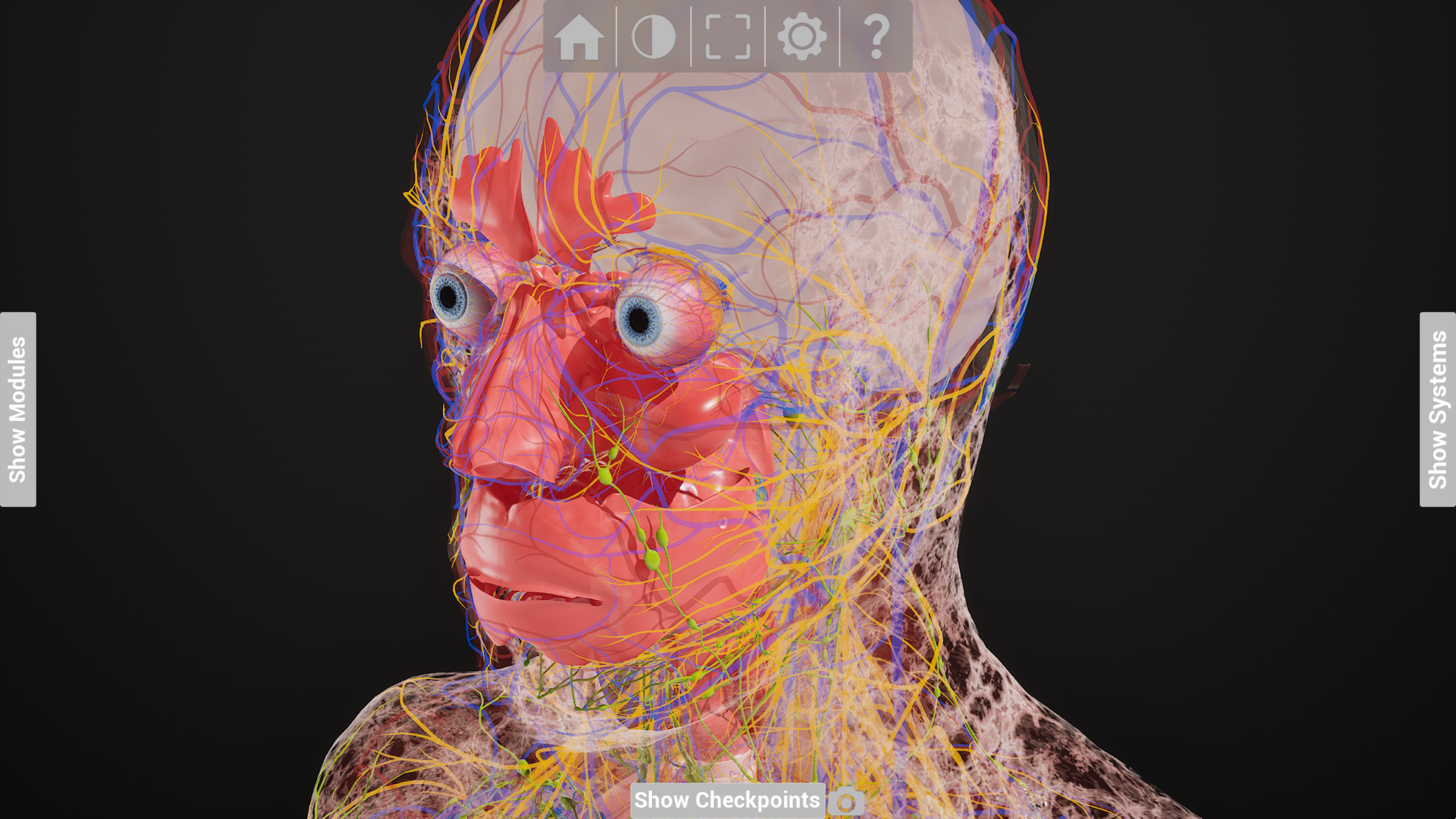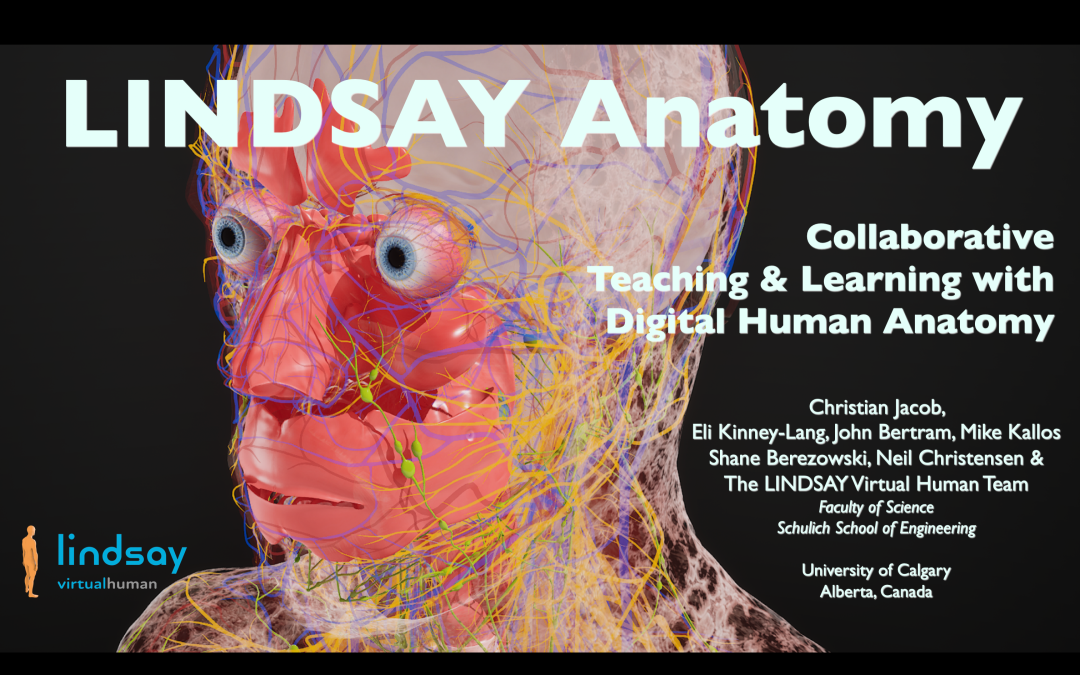Our aspiration for the LINDSAY Anatomy Explorer app is to complement in-person anatomy labs that students usually attend to learn more about the intricate and marvelous structures of the human body. However, anybody interested in learning more about the human body should find this app useful. We are currently also working with teams from the faculties of Engineering, Nursing, Kinesiology, and the Cumming School of Medicine here at the University of Calgary to explore how digital anatomy tools like the LINDSAY Anatomy Explorer can help improve student engagement and learning.
The LINDSAY Anatomy Explorer is centered around highly detailed anatomy male and female models developed by SciePro, a company that punches way above its weight with Sebastian Kaulitzki as their highly ambitious CEO. Both fe/male models are fully licensed by the university, giving us the flexibility to modify them and create customized teaching & learning scenarios, so that contents can be tailored for specific student engagements or specialized ways of delivery. To maximize accessibility, the app runs directly in a web browser, with support for desktop and mobile devices as well as augmented reality headsets.
Users can interact with the anatomy models by adjusting the visibility of the different body systems, making it easy to focus on what’s most relevant to one’s learning or what an instructor would like to focus on.
In its current version, one can also capture high-resolution snapshots of the models in their current state. These scenes can be recalled for presentations and be used to build guided lessons, immersive scenarios, or assignment-based walkthroughs.
As the models are presented within the Unreal Engine game development system, custom modules can be developed to support specific lectures or lab experiences as “digital anatomy worlds” similar to computer games. For example, interactive teaching & learning modules can focus on different aspects of the nervous system, create a walk through the brain, and use the slicing tool that lets users explore the body in cross-section from multiple planes.
To further enhance engagement, a built-in tool allows the model to be ‘exploded,’ separating components to reveal their internal structures in greater detail.
We are currently developing a curated, descriptive database designed to grow over time, with AI integration in mind. Large language models will help enrich the content and allow users to ask questions or explore topics more deeply through conversational AI.


The LINDSAY@BME Team
The LINDSAY@BME anatomy app is being developed by a team of teaching professors, researchers, and students, as well as modelling and software developers. The project initiated from the departments of Biomedical Engineering and Computer Science at the University of Calgary. The LINDSAY@BME team is currently being expanded across our campus to the faculties of Nursing, Kinesiology, and Medicine. A transdisciplinary project like this always highly benefits from people with different backgrounds and skill levels coming together for a shared mission. Here are the individuals that are coming together to make a difference.
Faculty Advisors
- Christian Jacob, Computer Science
- Eli Kinney-Lang, Biomedical Engineering (BME)
- John Bertram, Medicine, BME
- Laura Curiel, BME
- Carol A. Gibbons Kroeker, Nursing
Developers
- Shane Berezowski, 3D Generalist
- Neil Christensen, Backend Software Developer
Teaching Professors
- Kristina Marrelli, Kinesiology
- Heather Jamniczky, Medicine
- Anna Pletnyova, Nursing
- Jennifer Ostrom, Nursing
Students
- Chloe Fulbrook, Electrical & Software Engineering, BME
- Gabe Gallo, Computer Science
